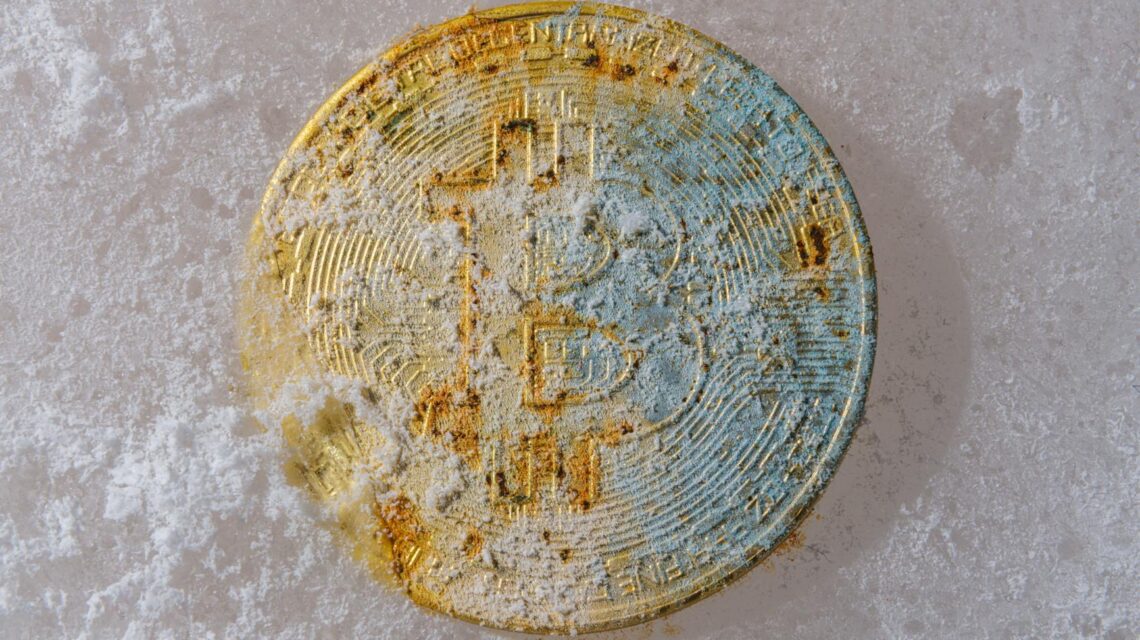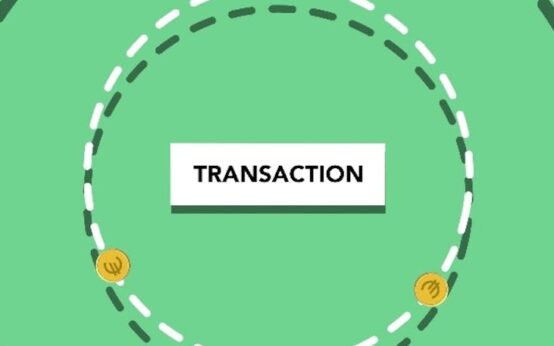The Alluring Siren Song of 1,000% APY and the Rocks Below
You’ve seen the screenshots on Twitter. Those eye-watering, four-digit APYs that make your traditional savings account look like a rounding error. Welcome to the wild, wonderful, and often treacherous world of decentralized finance (DeFi) yield farming. It’s a place where capital can be incredibly productive, generating returns that seem impossible in the legacy financial system. But here’s the thing about sirens—their songs are designed to lure you onto the rocks. The reality is that for every success story, there are countless tales of lost funds, exploited contracts, and portfolios that went to zero. The key to survival and success isn’t just about finding the highest yield; it’s about learning how to manage risk yield farming. Without a solid risk management framework, you’re not farming; you’re just gambling with extra steps.
This isn’t a guide to scare you away. On the contrary, it’s a guide to equip you. We’re going to pull back the curtain on the most common and dangerous risks lurking in DeFi liquidity pools and give you a practical, actionable framework to protect your hard-earned crypto. Think of this as your map and compass for navigating these choppy waters. Let’s get to it.
Key Takeaways
- Risk is Inherent: High APYs are a direct reflection of high risk. There is no free lunch in DeFi.
- Smart Contracts are Vulnerable: The code that runs DeFi protocols can have bugs or be exploited. Always check for reputable audits.
- Impermanent Loss is Real: Providing liquidity for volatile assets means you can end up with less value than if you had simply held them.
- DYOR is Non-Negotiable: “Do Your Own Research” is your primary defense against scams, rug pulls, and poorly designed protocols.
- Diversification Matters: Spreading your capital across different protocols, chains, and asset types is crucial to mitigating platform-specific risk.
Understanding the Landscape of Yield Farming Risks
Before you can manage risk, you have to know what you’re up against. The risks in DeFi are multifaceted, ranging from technological failures to pure human greed. Let’s break down the big ones.
Smart Contract Risk: The Code is Law, Until It’s Not
Every DeFi protocol—every single one—is built on a foundation of smart contracts. These are self-executing contracts with the terms of the agreement directly written into lines of code. It’s a brilliant system that removes the need for intermediaries. But what happens if that code has a flaw? A bug? An unforeseen loophole?
That’s smart contract risk. It’s the risk that a hacker could find an exploit in the code and drain the protocol of all its funds, including yours. It’s happened time and time again, even to large, seemingly secure projects. A smart contract doesn’t care about intent; it only executes what the code tells it to do. If a clever attacker finds a way to tell it to send them all the money, it will obey.
So, how do you protect yourself?
- Look for Audits: Reputable projects pay thousands, sometimes hundreds of thousands of dollars, to have their code audited by third-party security firms like CertiK, Trail of Bits, or OpenZeppelin. An audit is not a guarantee of safety, but a lack of one is a massive red flag. Always check the audit report yourself. Did the team fix the issues the auditors found?
- Time-Tested Protocols: A protocol that has been live for years and holds billions in value without being hacked (like Aave or Uniswap) is generally safer than a brand-new project that just launched last week. This is often called the “Lindy effect”—the longer something has survived, the longer it’s likely to survive.
- Team Reputation: Is the team public (doxxed) or anonymous? While many successful anonymous teams exist in crypto, a public team with a solid reputation has more to lose from a failure or rug pull.

Impermanent Loss: The Sneaky Profit Eater
This is probably the most misunderstood concept in yield farming. The name itself is a bit misleading. Impermanent Loss (IL) is the difference in value between holding two tokens in a liquidity pool (LP) versus simply holding them in your wallet. It happens when the price of the tokens in the pool changes from the time you deposited them. The greater the price divergence, the greater the impermanent loss.
Let’s use a super simple example. Imagine you provide liquidity to a 50/50 ETH/USDC pool.
- You deposit 1 ETH (worth $3,000) and 3,000 USDC. Your total deposit is worth $6,000.
- The price of ETH doubles to $6,000.
- Arbitrage traders will now rebalance the pool by buying the cheaper ETH from it until the ratio is correct again.
- When you withdraw, you won’t get 1 ETH and 3,000 USDC back. You’ll get something like 0.707 ETH and 4,242 USDC. The total value is about $8,484.
- Sounds great, right? But what if you had just HODLed? You’d have 1 ETH (now worth $6,000) and 3,000 USDC, for a total of $9,000.
That $516 difference is your impermanent loss. It becomes a permanent loss only if you withdraw at that point. Your position is still profitable overall, but you would have made more money by just holding the assets. The fees you earn from the LP are meant to compensate for this risk. If your trading fees are higher than your IL, you’re in profit. If not, you’re losing out.
Minimizing Impermanent Loss:
- Stick to Stablecoin Pairs: Providing liquidity for pairs like USDC/DAI has virtually zero impermanent loss because their prices don’t diverge. The yields are lower, but so is the risk.
- Use Correlated Assets: Pairs like ETH/wstETH (wrapped staked Ether) tend to move together, which significantly reduces IL.
- Understand the Math: Before entering a volatile pool, use an impermanent loss calculator to understand potential outcomes at different price points.
Rug Pulls & Malicious Actors: The Dark Side of DeFi
A rug pull is a type of exit scam where the developers of a project drain the liquidity from their own pool and disappear with the funds, leaving investors with a worthless token. It’s one of the most common and devastating risks, especially in newer, less-regulated corners of DeFi.
Red flags for rug pulls are often visible if you know where to look:
- Anonymous Team: No public faces, no track record. Easy to disappear.
- No Locked Liquidity: Legitimate projects often lock their initial liquidity in a smart contract for a set period, proving they can’t just run off with it. Tools like Team Finance or Unicrypt can verify this.
- Insanely High APY: If it looks too good to be true, it almost certainly is. Sky-high APYs are often used to attract a lot of liquidity quickly before the rug is pulled.
- Vague Whitepaper: A lot of buzzwords but no real substance on how the protocol works or generates value.

Market & Volatility Risk: The Crypto Coaster
This is a more general risk, but it’s crucial. You could be in the safest, most audited protocol in the world, but if the tokens you’re farming crash in value, you’re going to lose money. Many farms reward you in their own native token. For example, you might provide ETH/USDC liquidity to “SuperSwap” and earn $SUPER tokens as a reward. That 1,000% APY is based on the current price of $SUPER. But as more farmers earn and sell that token, its price can plummet. Your amazing yield can evaporate overnight, and you might not even make back what you lost to impermanent loss. Always ask: is the yield I’m earning real, or is it just inflationary token emissions?
A Practical Framework to Manage Risk Yield Farming
Okay, we’ve identified the monsters under the bed. Now, let’s talk about how to fight them. Having a systematic approach is what separates seasoned DeFi veterans from “rekt” newbies.
Do Your Own Research (DYOR): Your First and Last Line of Defense
You will see the acronym DYOR everywhere, and for good reason. It is the single most important principle for survival. Relying on a call from a YouTuber or a random guy on Twitter is a recipe for disaster. You need to become your own analyst.
“In DeFi, you are your own bank. That also means you are your own security guard, your own financial advisor, and your own compliance officer. DYOR isn’t just a suggestion; it’s your job description.”
A basic DYOR checklist should include:
- Read the Documentation (Docs): Don’t just skim it. Understand the tokenomics. How is value generated? Who holds the tokens? What are the vesting schedules for the team and investors?
- Investigate the Team: Are they public? What is their background? Have they built successful projects before? Or is it a group of anonymous developers with cartoon avatars?
- Check the Audits: Find the security audit reports. Read the summary. Were there any critical vulnerabilities found? Did the team acknowledge and fix them?
- Analyze the Community: Join their Discord and Telegram. Is the community genuinely excited and asking intelligent questions? Or is it just filled with bots spamming “wen moon?” A healthy community is a great sign.
- Look On-Chain: Use a block explorer like Etherscan to look at the token contract. Who are the top holders? If a few wallets hold 50% of the supply, that’s a huge centralization risk. Check that the liquidity is locked if the project claims it is.
Diversification: Don’t Put All Your Crypto in One Basket
This is a classic investment principle that applies perfectly to DeFi. Even if you’ve done all your research and feel confident in a protocol, a black swan event (like a sophisticated, novel hack) could still wipe it out. To manage this, you need to diversify.
- Across Protocols: Don’t put 100% of your farming capital into one protocol. Spread it across 3-5 different, well-regarded platforms. If one gets exploited, you won’t lose everything.
- Across Chains: The DeFi ecosystem is multi-chain. Consider farming on Ethereum, Arbitrum, Solana, Avalanche, etc. This protects you from chain-specific issues or soaring gas fees on one network.
- Across Risk Levels: Allocate your capital according to your risk tolerance. Maybe 60% goes into “safe” stablecoin farms on Aave or Curve, 30% into blue-chip pairs like ETH/BTC on Uniswap, and only 10% into higher-risk, high-APY farms on newer protocols.

Using DeFi Insurance: Your Financial Safety Net?
Did you know you can buy insurance on your DeFi deposits? Protocols like Nexus Mutual and InsurAce.io allow you to purchase coverage against specific risks, most commonly smart contract failure. You pay a premium (usually expressed as an annual percentage) and if the protocol you’re farming on gets hacked and you lose funds, you can file a claim.
It’s not a perfect solution. The claims process can be complex and is often decided by the insurance protocol’s governance token holders. Coverage can also be expensive for riskier protocols. However, for large deposits in major protocols, it can be a worthwhile expense for adding another layer of security and peace of mind.
Start Small and Scale Up
This is the most practical piece of advice. Before you ape a significant portion of your portfolio into a new farm, start with an amount you are absolutely, 100% willing to lose. Think of it as tuition. Use this small amount to go through the entire process:
- Swapping for the required tokens.
- Providing liquidity to get the LP token.
- Staking the LP token in the farm.
- Observing the rewards accumulate.
- Harvesting (claiming) your rewards.
- Unstaking your LP token.
- Removing your liquidity.
This process will familiarize you with the protocol’s interface and help you understand the gas fees involved. Once you’re comfortable and have watched the farm for a while to ensure its stability, you can consider scaling up your position.
Conclusion
Yield farming remains one of the most powerful wealth-generation tools in the crypto space, but it is an arena for the cautious and the diligent. The path to success is paved not with blind chasing of the highest APYs, but with a disciplined, systematic approach to risk management. By understanding the dangers of smart contract exploits, impermanent loss, and rug pulls—and by diligently applying the principles of deep research, diversification, and starting small—you can dramatically shift the odds in your favor.
Remember, the goal isn’t to avoid risk entirely; that’s impossible. The goal is to take calculated, well-understood risks where the potential reward justifies the danger. Be skeptical, be curious, and farm safely.
FAQ
Is yield farming still profitable in 2024?
Absolutely, but it’s more competitive than ever. The days of earning sustainable 1,000% APY on stablecoins are largely gone. Profitability now requires more skill in identifying new opportunities, managing risk actively, and understanding complex strategies. The most sustainable yields are often found on established blue-chip protocols, though they are much lower than the degen farms.
What is the absolute safest way to yield farm?
There is no 100% safe method in DeFi. However, the lowest-risk strategies generally involve providing liquidity for stablecoin-to-stablecoin pairs (e.g., USDC/DAI) on large, time-tested, and heavily audited protocols like Curve Finance. Another low-risk option is single-sided lending on platforms like Aave or Compound. The yields are modest, often in the 2-5% range, but the risk of impermanent loss is eliminated and smart contract risk is minimized due to the protocols’ long, secure track records.



 NFT Photography: A Photographer’s Guide to a New Market
NFT Photography: A Photographer’s Guide to a New Market  AI and Blockchain: A Powerful Tech Synergy
AI and Blockchain: A Powerful Tech Synergy  Get a Job in Blockchain: Your 2024 Web3 Career Guide
Get a Job in Blockchain: Your 2024 Web3 Career Guide  Wallet Types Explained: Hot vs Cold & More (2024 Guide)
Wallet Types Explained: Hot vs Cold & More (2024 Guide)  How Venture Capital is Shaping the Crypto Industry
How Venture Capital is Shaping the Crypto Industry  Sentiment Analysis for Crypto: A Trader’s Ultimate Guide
Sentiment Analysis for Crypto: A Trader’s Ultimate Guide  NFT Photography: A Photographer’s Guide to a New Market
NFT Photography: A Photographer’s Guide to a New Market  AI and Blockchain: A Powerful Tech Synergy
AI and Blockchain: A Powerful Tech Synergy  Get a Job in Blockchain: Your 2024 Web3 Career Guide
Get a Job in Blockchain: Your 2024 Web3 Career Guide  Wallet Types Explained: Hot vs Cold & More (2024 Guide)
Wallet Types Explained: Hot vs Cold & More (2024 Guide)  How Venture Capital is Shaping the Crypto Industry
How Venture Capital is Shaping the Crypto Industry  Sentiment Analysis for Crypto: A Trader’s Ultimate Guide
Sentiment Analysis for Crypto: A Trader’s Ultimate Guide